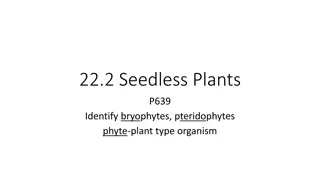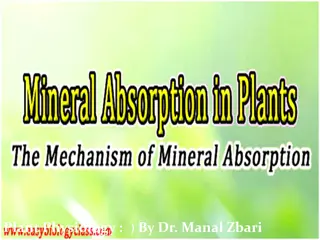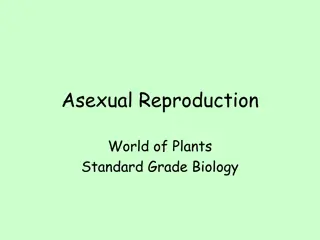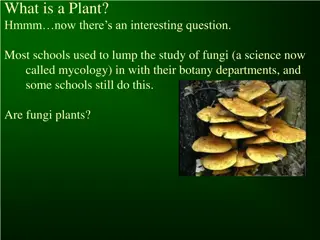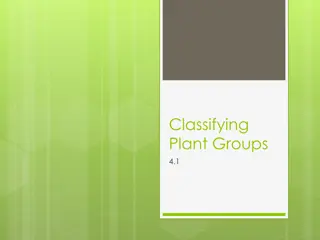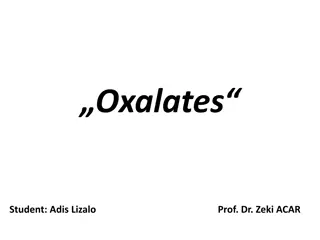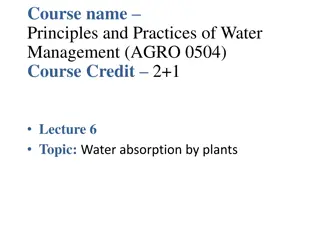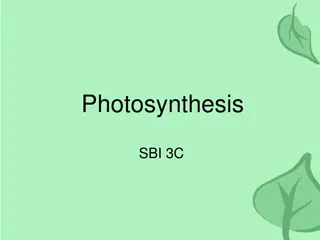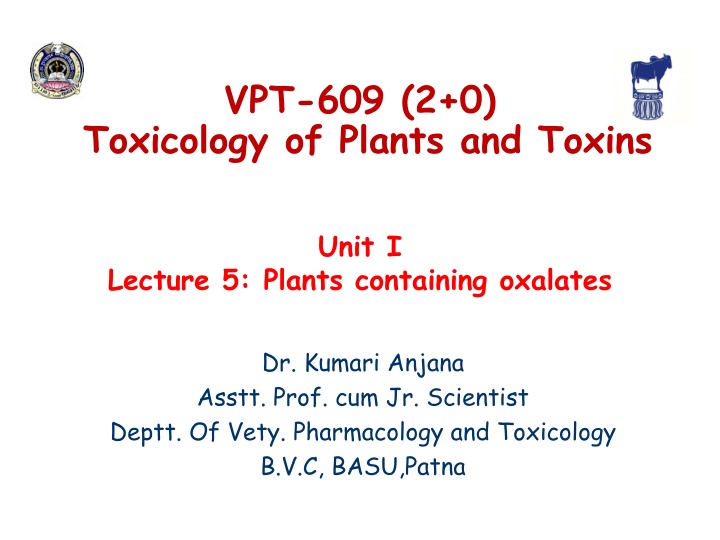
Plants Containing Oxalates: Toxicology and Mechanism of Toxicosis
Learn about the toxicology of plants containing oxalates, including sources of oxalates, toxicokinetics, mechanism of toxicosis, clinical signs, and necropsy findings. Understand how oxalates affect livestock and the potential risks associated with ingestion of oxalate-rich plants.
Download Presentation

Please find below an Image/Link to download the presentation.
The content on the website is provided AS IS for your information and personal use only. It may not be sold, licensed, or shared on other websites without obtaining consent from the author. If you encounter any issues during the download, it is possible that the publisher has removed the file from their server.
You are allowed to download the files provided on this website for personal or commercial use, subject to the condition that they are used lawfully. All files are the property of their respective owners.
The content on the website is provided AS IS for your information and personal use only. It may not be sold, licensed, or shared on other websites without obtaining consent from the author.
E N D
Presentation Transcript
VPT-609 (2+0) Toxicology of Plants and Toxins Unit I Lecture 5: Plants containing oxalates Dr. Kumari Anjana Asstt. Prof. cum Jr. Scientist Deptt. Of Vety. Pharmacology and Toxicology B.V.C, BASU,Patna
Oxalates Source: Primarily results from ingestion of plants rich in oxalates. Plants containing > 10% oxalates (on DMB) are toxic. Oxalate rich plants are very palatable to livestock. Large amounts of oxalic acid are formed on damp hay/straw or silage infested with Aspergilus niger or A. Flavis. Fresh sugar beet tops contain large quantities of oxalates and nitrates. The poisoning is commonly seen in sheep suddenly shifted to oxalate pastures, whereas, the sheep accustomed to oxalates can consume large quantities of the grasses without ill effects.
Oxalate rich plants The oxalate rich plants are: Amaranthus retrflexus, Atriplexspps., Beta vulgaris, Calandrina spp, Oxalis spp., Rumexs spp., Setaria spp. and Triantema spp. Atriplexspps.,
Toxicokinetics Sodium or potassium oxalates and oxalic acid are soluble and calcium oxalate is insoluble in the rumen. Soluble oxalates are detoxicated through conversion to carbonates and bicarbonates or formation of insoluble calcium oxalates, which are excreted through faeces. However, if excess oxalates are ingested i.e. beyond the ruminal capacity of its detoxification, oxalates are absorbed unchanged and produce toxicity.
Mechanism of Toxicosis Calcium metabolism is upset (oxalates chelate Ca++ causing acute hypocalcaemia), interfering with milk production in lactation in lactating animals and foetal bone growth in pregnant animals. Blocking of renal tubules by calcium oxalate crystals renal injury. Failure of blood clotting mechanisms and haemolysis. Oxalates also crystallize and cause neuronal damage in brain CNS signs and paralysis.
Clinical Signs Dullness, anorexia, anorexia, lowered head, keeps isolated from the herd, salivation, nasal discharge, weakness, rapid shallow breathing and collapse.
Necropsy Accumulation of calcium oxalate crystals in kidneys and urinary tract. Lungs filled with dark red blood. Petechial haemorrhages in visceral organs and heart.
Treatment Shift to oxalate-free pastures. Oral administration of dicalcium phosphate (25% in salt ration) or given as grain or alfalfa hay pellets containing 10% dicalcium phosphate @ 225 G/animals/day for elimination of oxalates (calcium oxalate) through faces. Prior treatment with dicalcium phosphate before allowing sheep to graze in oxalate rich pastures, does not result in oxalate poisoning.






